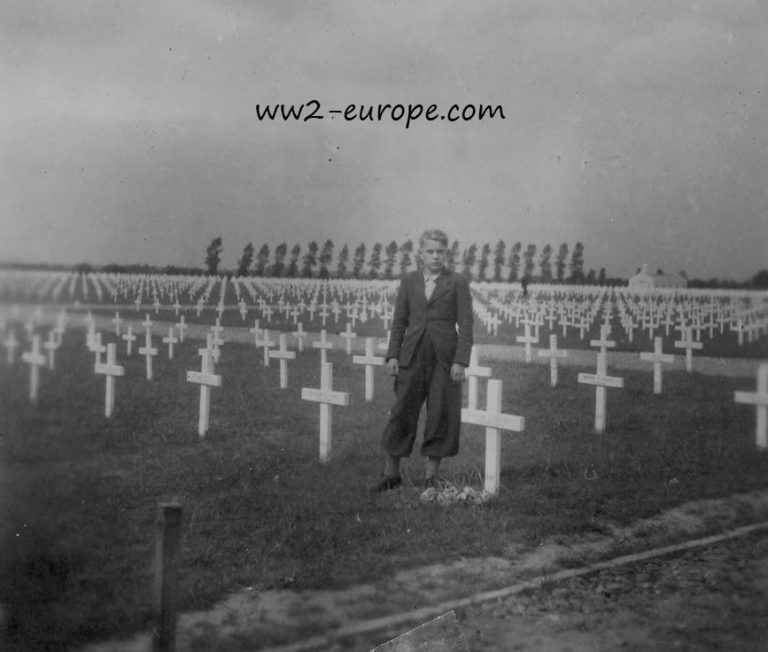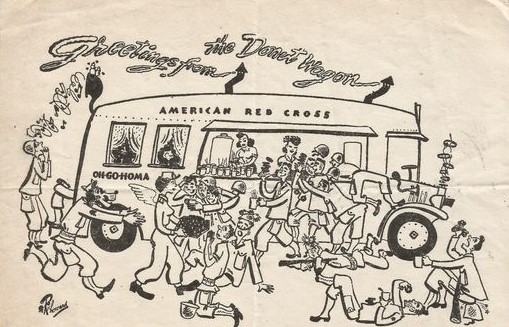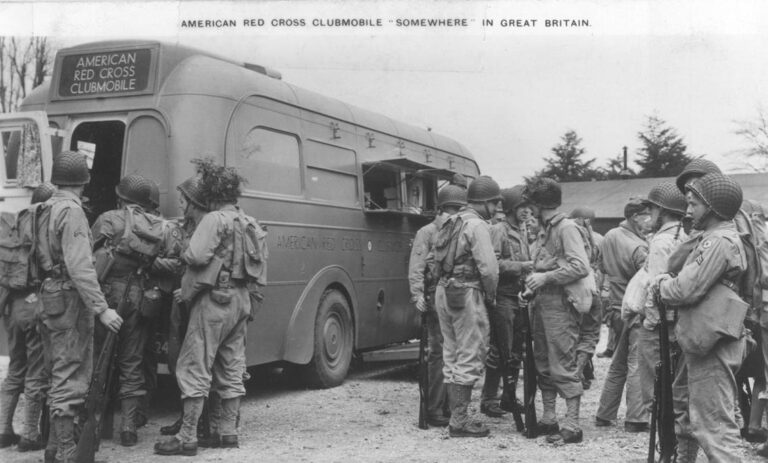A Brief History of Red Cross Clubmobile Service
The (American) Red Cross Club mobile Service was a mobile service club created during World War II to provide servicemen with food, entertainment and “a connection home.” The Club mobile was conceived by Harvey D. Gibson, a prominent New York banker and American Red Cross Commissioner to Great Britain, as a way to reach servicemen in airfields, camps and other theaters of war. All of the services provided by the Club mobile were free, although some Club mobiles began charging for food after 1942. The original Club mobiles operated from late 1942 until 1946, traveling all throughout Great Britain and Europe. Women who volunteered for the Club mobiles were popularly referred to as “donut dollies,” since one of their biggest tasks was making doughnuts for the servicemen.
The first Club mobile was a British Ford in October 1942, Clubmobiles began operation in Great Britain, eventually covering some thirty bases and docks at Liverpool, Greenoch, Scotland, and Belfast, Ireland. The vehicles were quickly outfitted by the women staffers who asked to be supplied with Victrola’s, records, gum, candy, cigarettes and first aid kits. In 1943, the first Club mobiles were remodeled London Green Line buses driven by an English driver and operated by three American women. Each Club mobile was fitted with a kitchen consisting of a built-in doughnut machine and a primus stove for heating water for coffee. One side of the kitchen opened out for serving food and drinks, while the rear of the Club mobile consisted of a “lounge” area with built-in benches that also doubled as sleeping bunks. The lounge also contained a Victrola with loud speakers, current music records, books, candy, gum and cigarettes.
In preparation for the invasion of Normandy, June, 1944, a smaller, 2-1/2-ton GMC truck was converted to a club mobile, with the necessary kitchen containing doughnut machine, coffee urns and the like. Close to one hundred of them were made ready. Red Cross girls who had worked on the larger club mobile in Great Britain, were given driving instruction in order to manage the truck club mobile. As soon after the invasion that it was safe to send Red Cross personnel onto the Continent, ten groups of 32 Red Cross girls each, along with eight club mobiles per group, a cinemobile, three supply trucks, trailers and three British Hillman trucks, were sent to France to be attached to various US Army Corps.. Like the original Club mobiles, these trucks were also fitted with mini-kitchens. After the invasion, ten groups of Red Cross Club mobile girls with eight Club mobiles per group were sent into France. From then on out, the Club mobiles traveled with the rear echelon of the Army Corps and received their orders from the Army.
The Red Cross required the Club mobile volunteers to be between the ages of twenty-five and thirty-five, have some college education and work experience, and to be “healthy, physically hardy, sociable and attractive.” The women who worked the Club mobiles were stationed in a town near American Army installations and traveled to a different army base each day. They learned how to make doughnuts and coffee in a Club mobile kitchen, and would then drive around the base, chatting with the servicemen, handing out snacks, and playing music.
The Club mobile volunteers continued their service throughout France, Belgium, Holland, Luxembourg and Germany until V-E Day in 1945, and provided limited service in Great Britain and Germany until 1946. A variation of the Club mobiles would also operate during the Korean War. During the Vietnam War, a similar program operated as Supplemental Recreation Overseas Program.
Thanks to Wikipedia and Elma Ernst Fay
(more pictures at cemeteries special)


